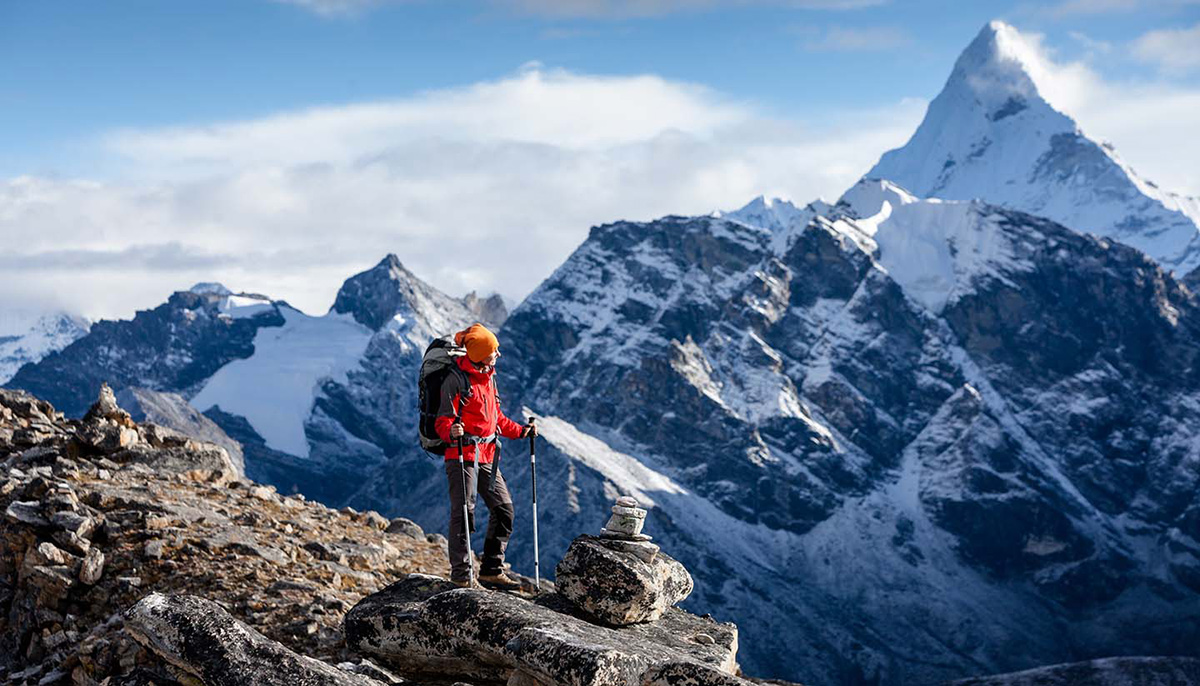
The tourism sector witnessed major instability during the ten years of the Maoist insurgency, border blockades and the great earthquake of 2015. Though the country is back on the track and is witnessing a little over a million tourist arrivals per year, it is still suffering from problems of mismanagement, lack of infrastructure, limited external investment and more.
To bring in focus the three major things that should be given high priority for tourism to develop and grow, Ankita Jain spoke to four tourism stakeholders in the country as Nepal positions itself for the Visit Nepal Year 2020.
Jean-Louis Ripoche
General Manager, Kathmandu Marriott Hotel
Tourism sector contributes to three high-priority goals of our country: income, employment and positive awareness about Nepal. As Nepal is a landlocked nation with China on the north and India on the other sides, it would need to improve its road transportation facilities. Most of Nepal remains unvisited due to the lack of safe and well-paved roads. Although it is noticeable that the country has made tremendous progress in connecting different regions through one or the other transport means, we still need to work a lot. Roads play an important role in the country’s development. We also need to develop adequate flight services from different parts of the world and focus on Europe as well as Asia. To cater to travellers from across the world at Kathmandu Marriott Hotel, an increase in flight connectivity is a must.
Deepak Raj Joshi
Chief Executive Officer, Nepal Tourism Board

For the past several years, we have a rigid image as a country which only caters to the mountaineers. So, we need to break this image as early as possible to be accessible to more and more travellers. Further, we are mostly dependent on season based tourism. And this is linked with the projected image of our country. Until we promote our other products like wildlife, culture, festivals, we won’t be able to attract tourists of different kinds. Travellers are constantly looking for unique experiences. Earlier, tourists used to land in places that were not very attractive or were not maintained with visitors in mind. Through “lifetime experiences” promoted via the Visit Nepal 2020 campaign, we are hitting the right chord.
Lastly, our infrastructure is not up to the mark. We cannot pull in tourists in huge numbers when our country doesn’t meet even the basic requirements of tourism infrastructure. This has led to the least exploration of our tourism products. Countries that are dependent on or are aware of the revenue prospects of tourism market the tourist spots by providing necessary travel linkages, stay arrangements and above all keeping them neat and tidy with all basic facilities around. These countries provide advance information to the tourists about the options on the places they may like to visit.
Monika Schaffner
Integrative Geographer, Connecting Spaces
The key priority for Nepal’s tourism should be to take care of its extraordinary natural beauty and cultural heritage, the very foundation of why tourists come here. Taking care involves planning with foresight, being conscious of Nepal’s genuine brand while creatively embracing new developments to enhance quality and positive growth.
Secondly, I do not believe that two million tourists in 2020 is a healthy target. Not only because the necessary infrastructure is not ready but also because this figure says nothing about quality. What is more desirable: two million visitors paying USD five per night or one million paying 10? Every tourism entrepreneur should ask: “What kind of visitors would I like to host in my home? A budget-traveller cutting prices, or one who comes with respect, to appreciate the exceptional experience I offer?” So, rather than going for numbers, let’s target quality tourism highlighting Nepal’s unique cultural and environmental assets, gifting the visitors with “Lifetime Experiences” that touch their hearts and imprint lasting memories.
Finally, I see great potential in growing the segment of Sacred Tourism. Nepal is abundant in sacred sites: ancient stone shrines, famous temples, remote meditation caves, blessed ‘beyul’ valleys along with the Himalayan range. But today, some of the most sacred sites are degenerating into noisy, polluted market settlements overrun by a mass of domestic and international visitors. More importantly, the sense of sacredness is on the verge of disappearance. Nepal features spaces of unique spiritual significance, and many tourists indeed visit Nepal for spiritual reasons. If this potential is carefully managed, built upon, it will not only develop economic sustainability but also contribute to safeguarding global sanctuaries of regenerative energy for those who live here and come to visit, now and in the future.
Nava Raj Dahal
Immediate Past President, TAAN

Availability of quality infrastructure is a pre-requisite to achieve broad-based and inclusive growth on a sustainable basis. Likewise, investment in infrastructure is also necessary for sustaining the growth rate of Nepal. Since the sector can be used to generate revenue and create employment, lack of infrastructure should not become a binding constraint on the growth of our economy.
Despite having tremendous potential for tourism, the tourism policy is not up to the mark. Our policy should assure tourist safety and security. Also, it should be in favour of the locals and the environment. I believe, Nepal has not exploited even 10% of its potential in the tourism industry. I am not against the private sector or public-private partnership in any area; but in the context of Nepal, the country has to have a vision regarding the kind of infrastructure it needs, prioritise geographical areas that could be turned into attractive tourism spots, and government support through guidance and policy. Conscious government involvement is necessary to protect the interests of the local population and the environment.
Lastly, the promotion taking shape via the Visit Nepal campaign isn’t enough. We need to digitally promote Nepal and its tourism products. The government should involve established media nationally and internationally for the promotion. We should also keep an eye on neighbouring countries as in how they are promoting their land and come up with similar strategies.



